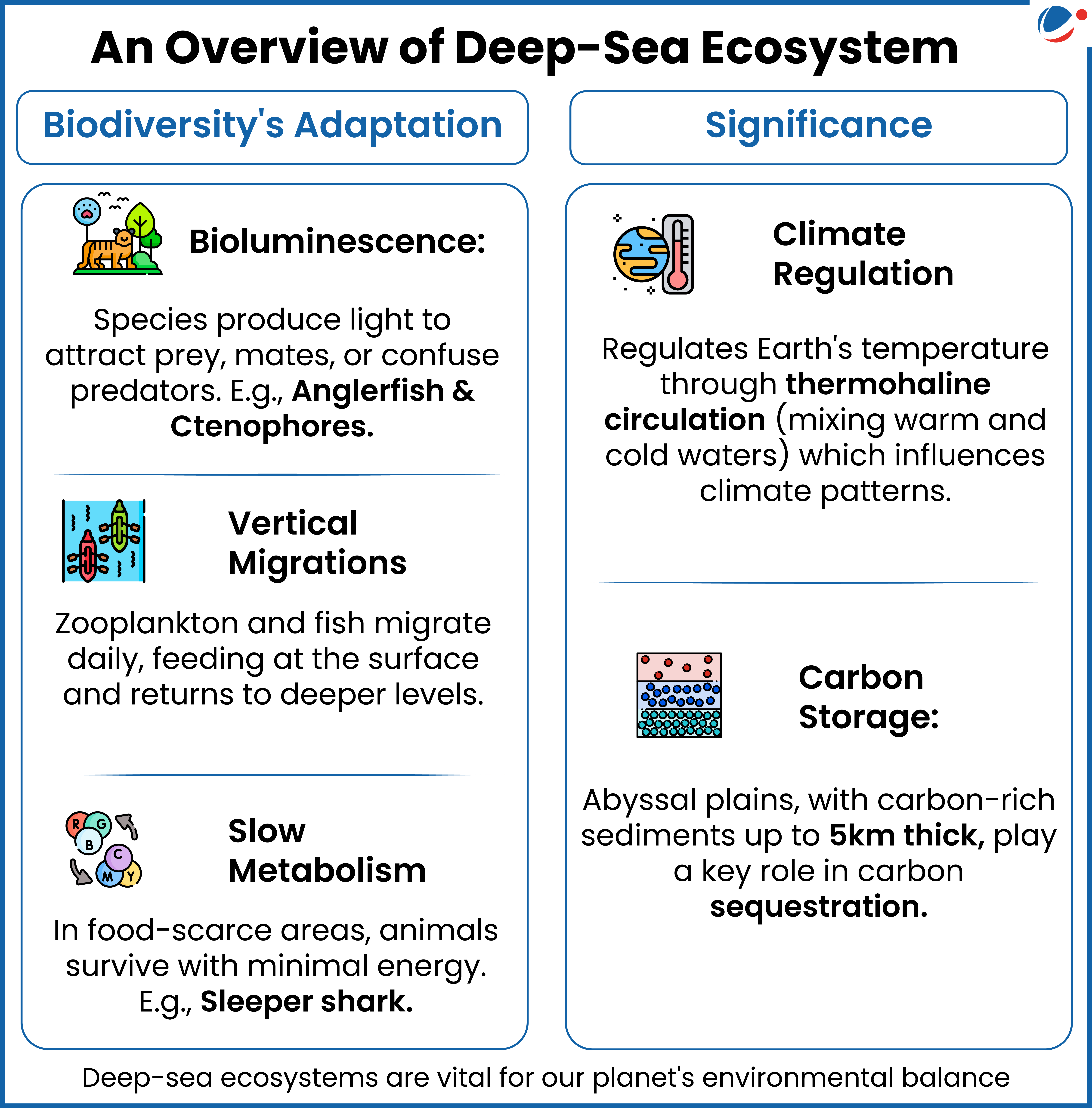The discovery came from Challenger 150 initiative which is endorsed by UNESCO/ Intergovernmental Oceanographic Commission (IOC) as part of the Ocean Decade Action (2021-2030).

Key Findings
- Flourishing Ecosystems: At depths of up to 1,300 meters (Mesopelagic Zone), ecosystems were thriving, with large corals and sponges as well as supporting diverse animal. E.g., icefish & giant sea spiders.
- These ecosystems had been isolated under 150-meter-thick ice for centuries, completely cut off from surface nutrients, essential for deep-sea life.
- New Species Discovered: Giant-sea spiders, Octopi, giant phantom jellyfish (can grow up to 1 meter wide), Vase-shaped sponge (possibly hundreds of years old).
About Deep-Sea Ecosystem
- Definition: Defined as the sea and seabed below 200m, the aphotic zone (where light fades) makes up 90% of Earth's marine environment, representing the planet's largest biome.
- Unique Deep-Sea Habitat and Biodiversity:
- Abyssal Plains: Dark and muddy seafloor; Species rely on marine snow for sustenance. E.g., Sea cucumbers.
- Marine Snow: Consists of organic matter drifting down from ocean surface; serve as food & aid carbon sequestration.
- Hydrothermal Vents: Hot, mineral-rich towers; Species rely on chemosynthetic bacteria for sustenance. E.g., Tubeworms and Yeti crabs
- Whale Falls: As whale carcass sinks, it creates a temporary ecosystem, supporting scavengers. E.g. Hagfish.
- Abyssal Plains: Dark and muddy seafloor; Species rely on marine snow for sustenance. E.g., Sea cucumbers.



